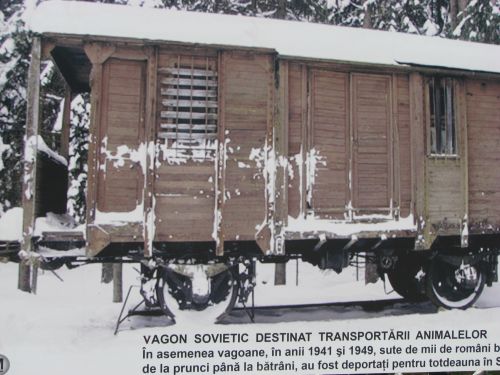
Evidence of the Soviet repression was exhibited Friday in the square in front of the monument to ruler Stepan the Great. More than 25 photographs and documents represent children who remained without parents as a result of deportations, women and men working in Siberia, and hundreds of persons loaded into freight cars to be thrown into the Volga River, Info-Prim Neo reports.
“No exposition centering on persons repressed during the Soviet regime was staged during 15 years. There were memories and verbal proofs, but no written evidence. The exhibited photographs and documents show that the deportees were deprived of childhood, adolescence and youth as well as serene old age. It was our duty to provide evidence of the Soviet repression so that the young people know more about those events,” said the head of the Association of Former Deportees and Political Prisoners Valentina Sturza.
The exhibition themed “They resisted, fought and defeated the red Terror” will be open until end-June. The photos and documents were collected from former deportees and their families.
“I remember how my mother woke us up in the morning. I saw my father barefooted. He was crying. They did not allow him to tell us anything. They took him and we have never seen him again. He died on foreign land and there was no one of us near him to cry at his grave,” said Eudochia Profil, whose father was deported in 1941.
Elena Postica, vice director of the National Museum of Archeology and Natural History, said the most hardworking persons, people of culture, doctors and teachers – the Moldovan intelligentsia - were deported to Siberia and Kazakhstan. “The exhibition is an homage rendered to the victims of the Communist government because the deportees went through the harshest moments in Moldova’s history,” said Elena Postica.
12,360 persons were deported from Bessarabia on the night of June 13, 1941. According to official statistics, the victims of Stalinist repression totaled 22,648 Bessarabians, but the deportees say the figure is much higher.

